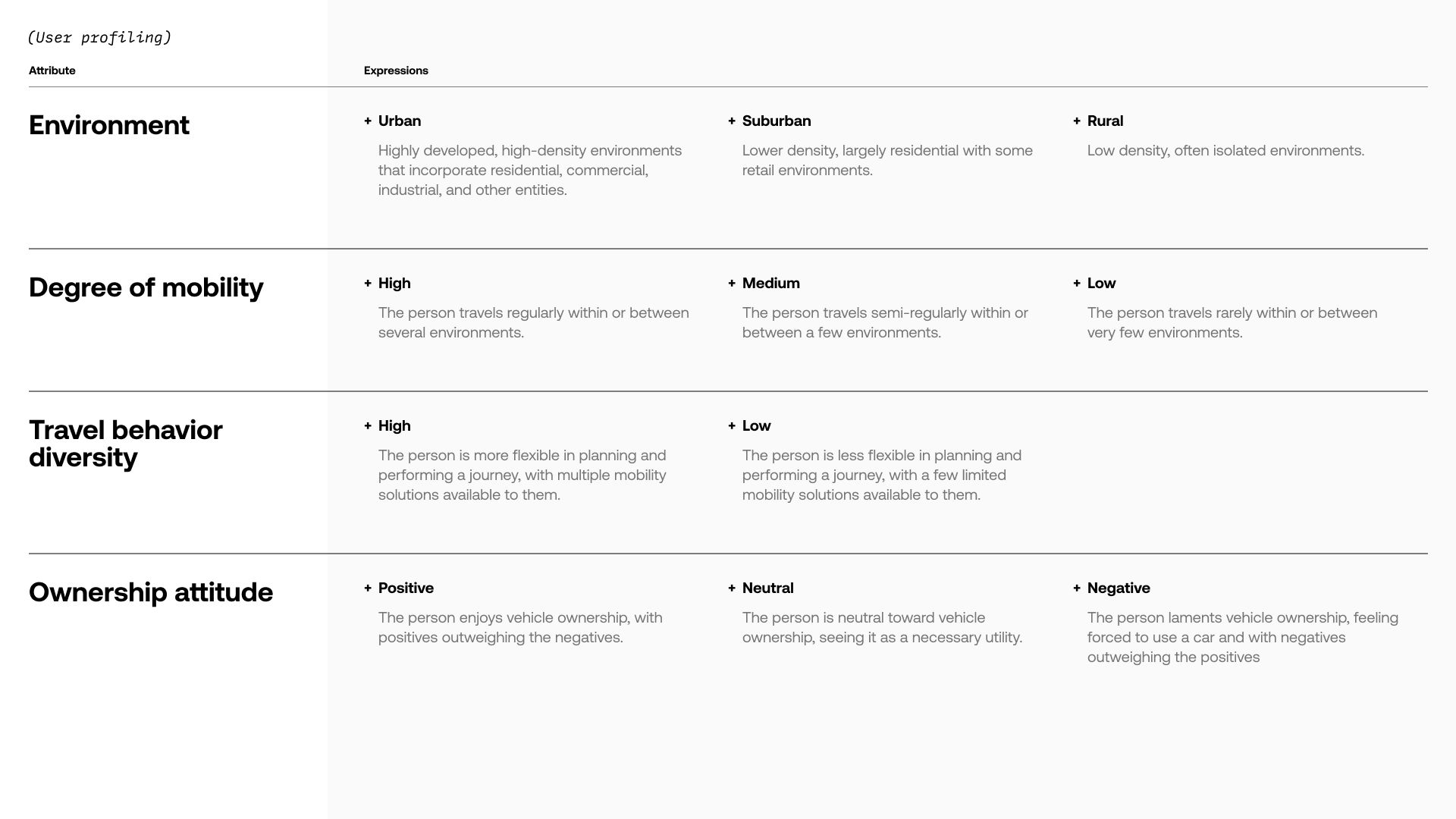
Loading all those gorgeous pixels
Toyota: Towards
an omnichannel
experience
In 2023, I was lead product designer helping Toyota to increase the footprint and value of their digital product solutions with an omnichannel presence that drives opportunities for deeper customer connection and new sources of revenue. The work focused on creating a set of tools to demonstrate how Toyota can uncover areas for innovation, specifically in Service & Maintenance and Payments.
Mapping customer
experience contexts
Although customers perceive Toyota's portfolio of products and services as one, organisational divisions within the company damage the consistency and continuity of user experience across them. Constructing customer experience contexts can help to solve this problem. Capturing the user’s circumstances, tasks, and goals during the lifetime of owning and running a vehicle—and the specific needs and touchpoints they interact with along the way—encourages internal teams to focus on the broader customer perspective. This approach also helps to highlight redundancies and gaps across the experience, and identify optimum ways to respond to customer needs via connected services.
Layering in universal
CX needs
To develop an overarching strategy for consistent connected services, the work moved beyond the primary focus of the project—Servicing & Maintenance and Payments—to investigate and categorise all common and well-established user needs that contribute to the overall quality of customer experience.
Getting to know
the customer better
Toyota design teams commonly rely on the socioeconomic and sociodemographic customer traits used to market their vehicles when considering user experience. These do not reflect the richer, broader spectrum of customer circumstances and so a more robust and diverse system of “atomic” user attributes was created. This helped to account for a wider customer base, factor-in subtle differences, and cover specific conditions and requirements when generating user scenarios for ideation and design.

User attributes and their expressions
Attributes and associated expressions can build a profile for any Toyota user. For example, a Toyota user inhabits a certain environment (the attribute), and within that a specific type of environment—urban, suburban, rural (the expression). These then help to determine specific customer goals, needs, and limitations.

Generating user scenarios
By combining standardized attributes, we can rapidly generate a range of diverse profiles and detailed scenarios, and prioritize them based on user insights and business needs. This framework provides the foundation for quickly and effectively uncovering challenges and opportunities, which in turn stimulate concept generation.
Multi-level journey
mapping
Journey mapping is used sparsely at Toyota and only in the context of a narrow business case or customer experience area. The proposed new approach addressed these limitations by introducing several levels of scale. Documenting the end-to-end user journey at a high level enables an understanding of how every interaction can yield data and insights that might affect the customer experience. Further breaking down selected phases enables tracking of more granular, nuanced aspects of customer needs and goals across the ecosystem.
By adding “context-agnostic” customer experience elements involved in a particular activity (eg. Service & Maintenance), Toyota teams can move beyond essential utilitarian functions and pinpoint those factors that foster greater customer engagement at each stage.
Accounting for
multi-contextual
experiences
Payments present a unique set of challenges. Unlike Service & Maintenance, Payments are involved across a variety of contexts and cannot be described with a single unified user journey map. For this reason, an alternative method was proposed. Mapping all activities that require payment helps to isolate every touchpoint that could be used to perform the transaction, and determine whether they are fully controlled by Toyota, belong to a broader mobility ecosystem, or are maintained and operated by a third party. This helps to evaluate the potential for a consistent experience, and identify opportunities for standardisation and partnerships.
From the wider payment contexts map, we can create a detailed user journey and flow associated with each activity—identifying similarities, differences, and unique opportunities. This helps to establish the constraints and requirements for integrating multiple touchpoints into a consistent cross-channel experience.
Looking ahead
The stage is set to identify new opportunities for enhanced customer experiences provided by an omnichannel presence. Initially, by creating a set of tailored tools that more fully articulate the needs, touchpoints, pain points, and scenarios of the user throughout Service & Maintenance and Payments. And from there, the ability to generate a broad range of functional and experiential ideas, and envision new conceptual models and product solutions.






